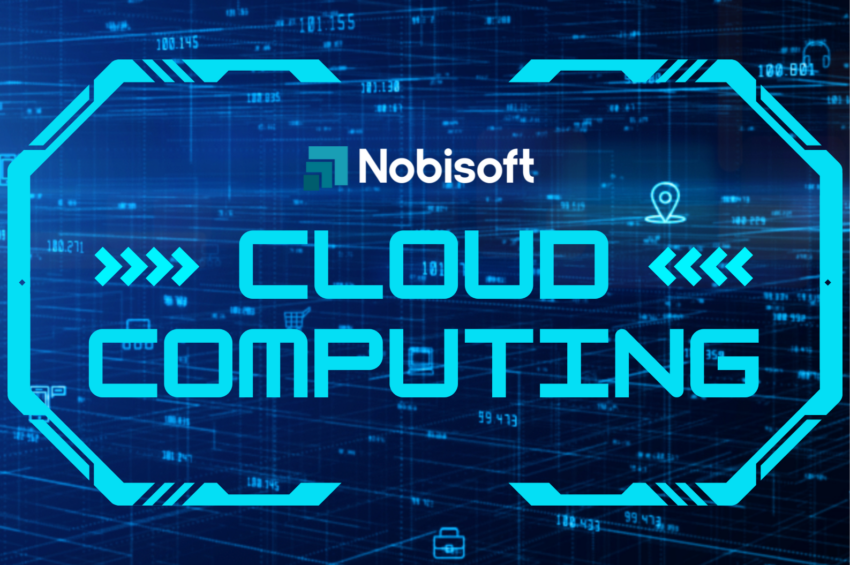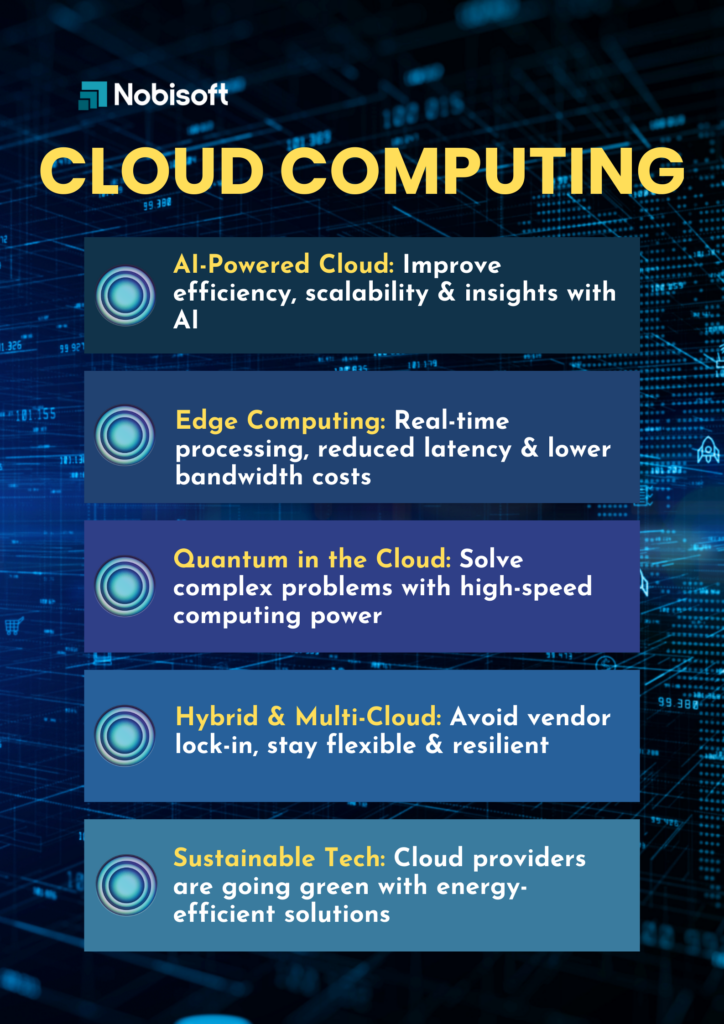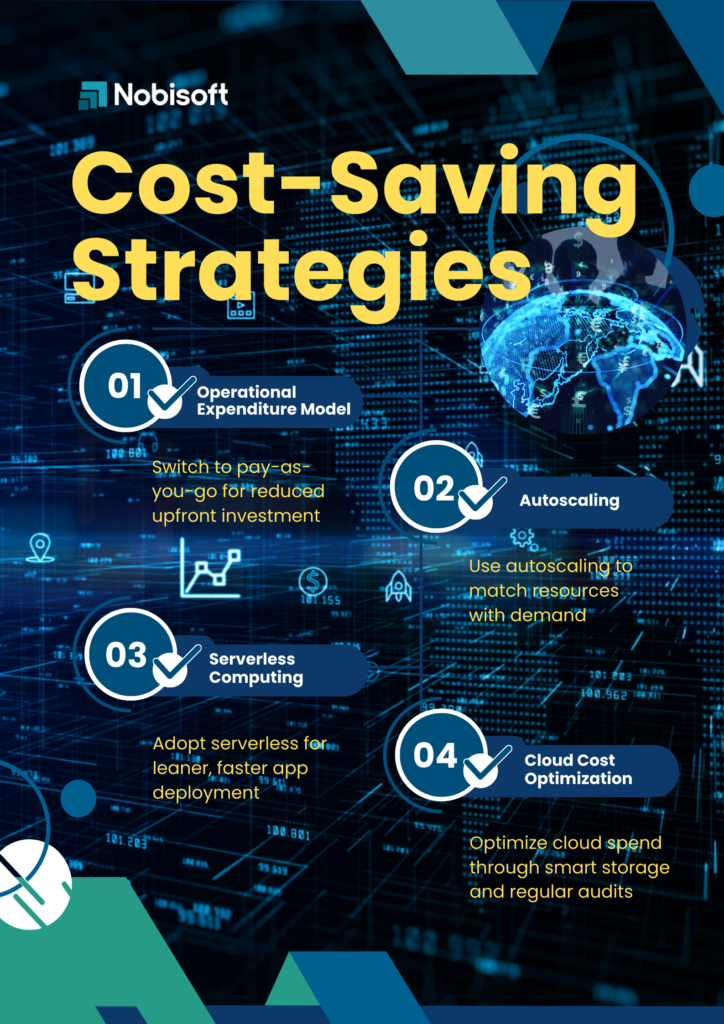
Smarter, Greener, More Agile
1. Cloud technology is evolving fast — and here’s how businesses can stay ahead:

– AI-Powered Cloud Services: Artificial Intelligence (AI) is becoming integral to cloud computing, enhancing resource management, security, and scalability. This integration allows businesses to operate more efficiently and gain deeper insights.
– Edge Computing Integration: Combining edge computing with the cloud enables real-time, low-latency data processing. This reduces the need to send excessive data to centralized platforms, thereby lowering bandwidth costs and improving application scalability.
– Quantum Computing Accessibility: Cloud platforms are making quantum computing more accessible, offering unprecedented computational speed and efficiency. This advancement allows companies to tackle complex problems more effectively.
– Hybrid and Multi-Cloud Strategies: Adopting hybrid and multi-cloud approaches helps businesses avoid vendor lock-in and leverage the strengths of various infrastructures. This strategy enhances flexibility and resilience.
– Sustainability Initiatives: Cloud providers are prioritizing green computing by investing in renewable energy sources and energy-efficient technologies. These efforts aim to reduce the environmental impact of data centers.
2. Strategies for Cost Reduction and Increased Flexibility through Cloud Computing

– Operational Expenditure Model: Transitioning to cloud services allows companies to shift from capital expenditures to operational expenditures, paying only for the resources they use. This model reduces the need for significant upfront investments in physical infrastructure.
– Autoscaling: Implementing autoscaling enables businesses to dynamically adjust computing resources based on demand. This approach ensures optimal performance during peak times and cost savings during low usage periods.
– Serverless Computing: Adopting serverless architectures allows companies to run applications without managing underlying servers, reducing operational complexity and costs.
– Cloud Cost Optimization Practices: Regularly reviewing pricing, identifying unused resources, and right-sizing services help in managing and reducing cloud expenses effectively.
– Leveraging Cloud Storage Options: Utilizing appropriate storage solutions, such as object storage for infrequently accessed data, can lead to significant cost savings.
By embracing these advancements and strategies, companies can harness the full potential of cloud computing to drive innovation, reduce costs, and enhance operational flexibility.
